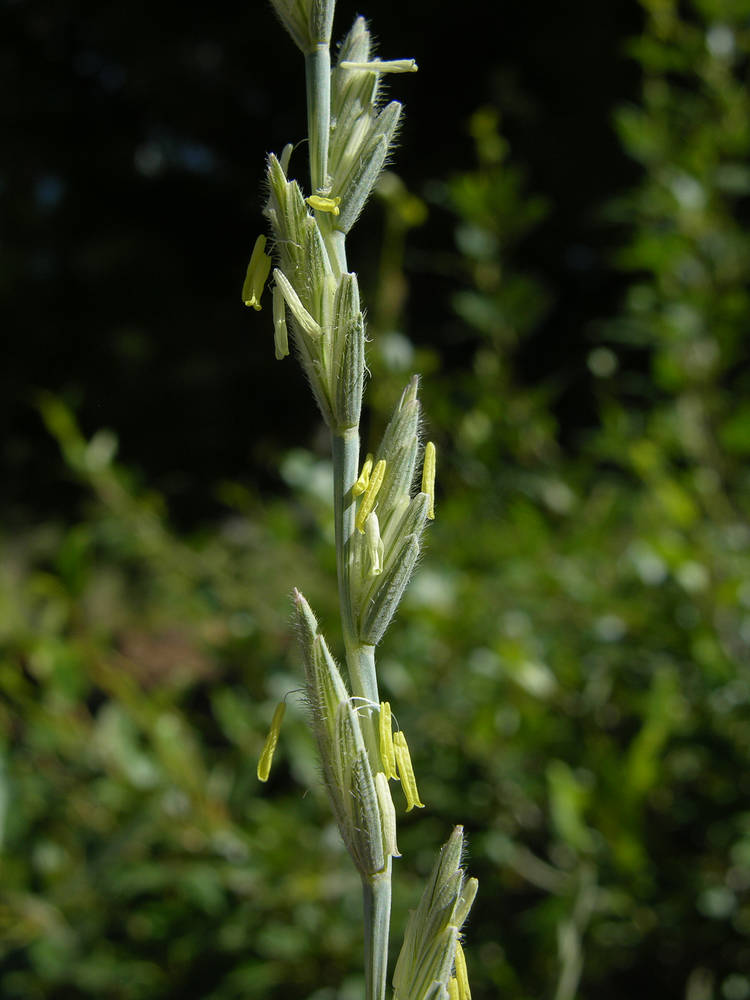Thinopyrum intermedium
Thinopyrum intermedium ssp. intermedium
intermediate wheatgrass
intermediate wheatgrass
glabrous or hairy or occasionally hairy only at the nodes; lowest internode including sheath approximately 3 mm thick.
ligules 0.1–0.8 mm;
blades flat, 2–8 mm wide.
spikes 8–21 cm; middle internodes 7–12 mm; inflorescence axes pubescent.
11–18 mm, 3–10 florets.
glabrous or with appressed hairs;
midvein usually more prominent and longer than the lateral veins;
tips obliquely truncate or obtuse to acute or occasionally short-pointed;
lower glumes 4.5–7.5 × 1.5–2.5 mm, 5–6-veined;
upper glumes 5.5–8 × 2–3 mm, 5–7-veined.
usually glabrous, sometimes scabrous over the veins.
7.5–10 mm, glabrous or with hairs 1–1.5 mm;
lemma awns; if present; to 5 mm.
5–7 mm.
usually glabrous, sometimes with hairs on the outer edges.
Thinopyrum intermedium
Thinopyrum intermedium ssp. intermedium
2 subspecies.
Tinopyrum intermedium is a strongly rhizomatous wheatgrass often notable for its bluish coloration. It can be distinguished from other rhizomatous, nearly awnless wheatgrasses by its thick, sti? glumes. In the feld, the rhizomatous growth form is obvious, but this may be hard to determine on collected specimens because the shoots are sometimes clustered, and the narrow rhizomes are often not collected.
Open areas. 100–1800 m. BW, Casc, ECas, Lava, Sisk. CA, ID, NV, WA; north to Yukon, east to IA, south to Mexico; Eurasia. Exotic.
Barbara Wilson, Richard Brainerd, Nick Otting
Barbara Wilson, Richard Brainerd, Nick Otting
- Local floras:
BC,
CA,
OR,
WA
- Local Web sites:
CalFlora,
CalPhotos,
Flora NW,
PNW Herbaria
WildflowerSearch
iNaturalist (observations)
USDA Plants Database
- LBJ Wildflower Center
- SEINet
- Plants of the World Online
- Encyclopedia of Life
- Wikipedia
- Google Image Search
- Local floras:
BC,
OR,
WA
- Local Web sites:
Flora NW,
PNW Herbaria
WildflowerSearch
iNaturalist (observations)
- LBJ Wildflower Center
- SEINet
- Plants of the World Online
- Encyclopedia of Life
- Wikipedia
- Google Image Search





